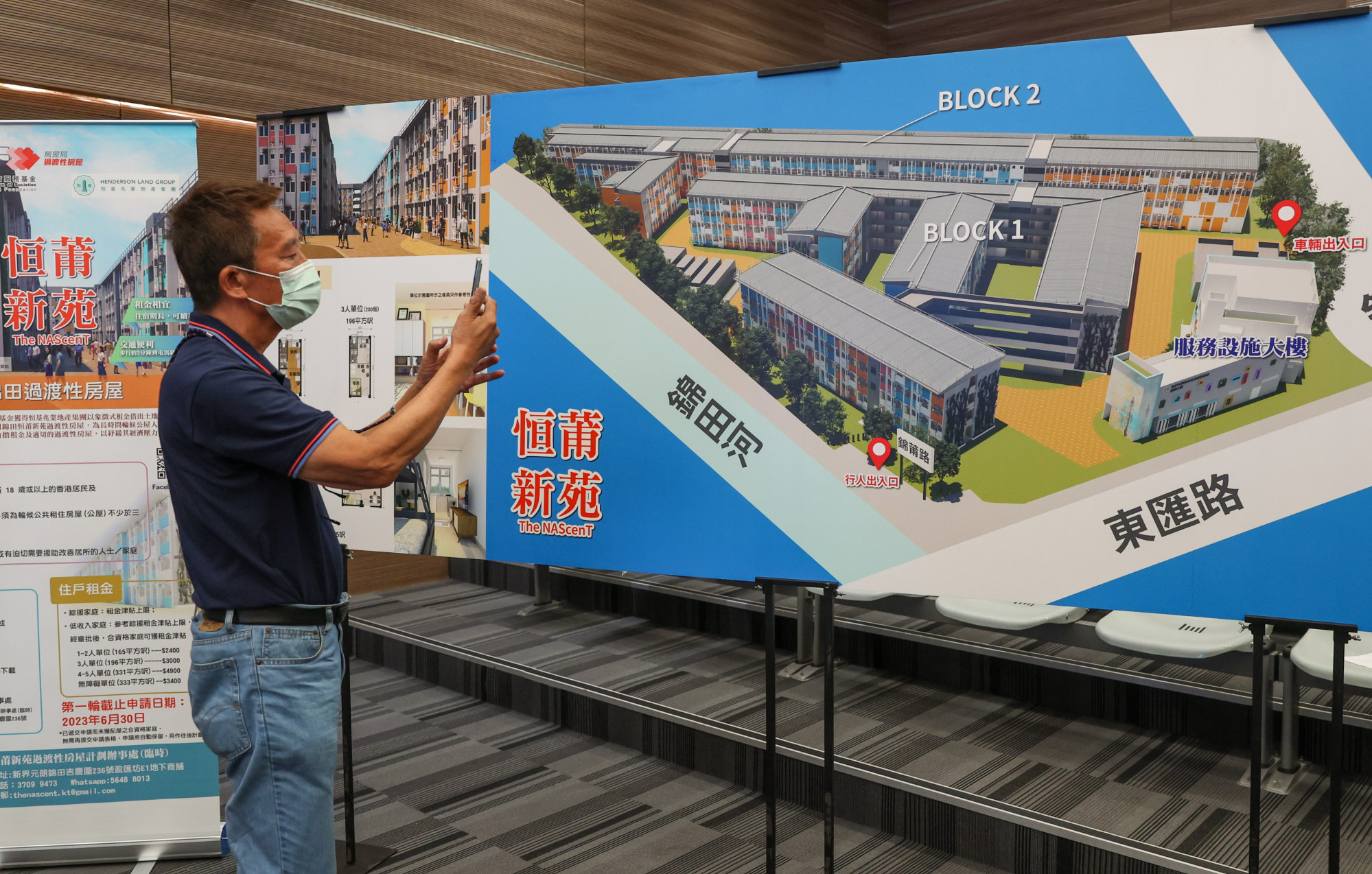
‘Severely mouldy’: Hong Kong housing chief criticises contractor over transitional homes project where rainwater has leaked into hundreds of flats
- Contractor hired by pro-Beijing group’s foundation under fire over homes at project in Kam Tin in New Territories, with water seepage affecting about 219 unfinished flats
- Secretary for Housing Winnie Ho says company will repair 219 flats, including 58 that firm has labelled ‘severely mouldy’ after rainwater leaked into them
Hong Kong’s housing chief has criticised a contractor of a foundation run by a pro-Beijing group for “poorly” managing the construction of a government-subsidised transitional homes project where rainwater has leaked into hundreds of flats, damaging at least 50.
Secretary for Housing Winnie Ho Wing-yin on Sunday reassured the public that the more than 1,000 transitional homes for the project, known as “The NAScenT”, would be delivered on time. But she questioned the quality of work performed by Shui On Building Contractors, which had been hired by the New Territories Association of Societies (Community Services) Foundation.
“The contractor and its suppliers managed some aspects poorly,” she said in response to media questions at a public event to promote transitional housing, adding authorities would closely monitor the repairs the company promised to carry out at the New Territories site.
The government granted the foundation HK$576 million (US$73.6 million) in public funds to deliver and manage 1,028 transitional units in Kam Tin, which were scheduled for completion in the final quarter of this year.
But 219 flats, or about one-fifth, have been hit by rainwater leaks since April. The contractor said 58 of those flats had become “severely mouldy” as a result.
“The contractor is taking full responsibility and promised to complete the project and the [repair works] simultaneously. We will closely follow up on this,” Ho said.
The homes are built using the “modular integrated construction” technique, which employs free-standing, integrated modules from a mainland Chinese factory that undergo quality inspections before being installed at the project site.

Ho explained that problems in packaging could lead to rainwater leaking into the modules during the delivery process, allowing mould to build up over time.
She said workers could have also forgotten to close the windows of the flats, causing rainwater to seep in.
About 60 per cent of the affected units had been repaired, and about 80 more flats would likely need fixes, Ho added.
“I have confidence that the contractor will strike a balance and the repairs will not affect the rest of the construction,” she said.
The foundation hired the contractor, which is part of Hong Kong-listed builder SOCAM Development, in July last year to design and build the project.
Clement Lui Kin, director of the foundation, said the damage had mainly been caused because the roof covering the affected blocks had yet to be completed and the waterproof packaging was insufficient to protect the cubicles from the rain.
“The 58 mouldy units have to get their ceilings, walls and floors replaced,” Lui said, adding that rust-prevention works also had to be finished.
He said the water seepage issue had been fixed as the roof was completed in August. Repairs are expected to be finished before the end of this month.
The contractor had offered a warranty period of a decade instead of a year for the affected flats, he said.
The transitional housing scheme is part of the government’s initiatives to help households that have waited for a public rental flat for more than three years, and other low-income residents.

The housing chief on Sunday said there were 7,800 transitional homes in the city at present and another 13,200 would be available by the end of next year.
Ho said sites in urban areas had an occupancy rate of more than 90 per cent, while those in the New Territories exceeded 87 per cent.
She added that some projects had a turnover rate of 110 per cent, with some residents having already moved to public housing.
The Housing Bureau will launch a centralised platform for the transitional flats programme on Monday, which will allow applicants to apply online.
Authorities have ramped up promotion efforts for the flats after some projects in rural areas were earlier found to have low occupancy rates of about 60 per cent.
The average waiting time for public rental housing stood at 5.3 years, as of the end of June.

